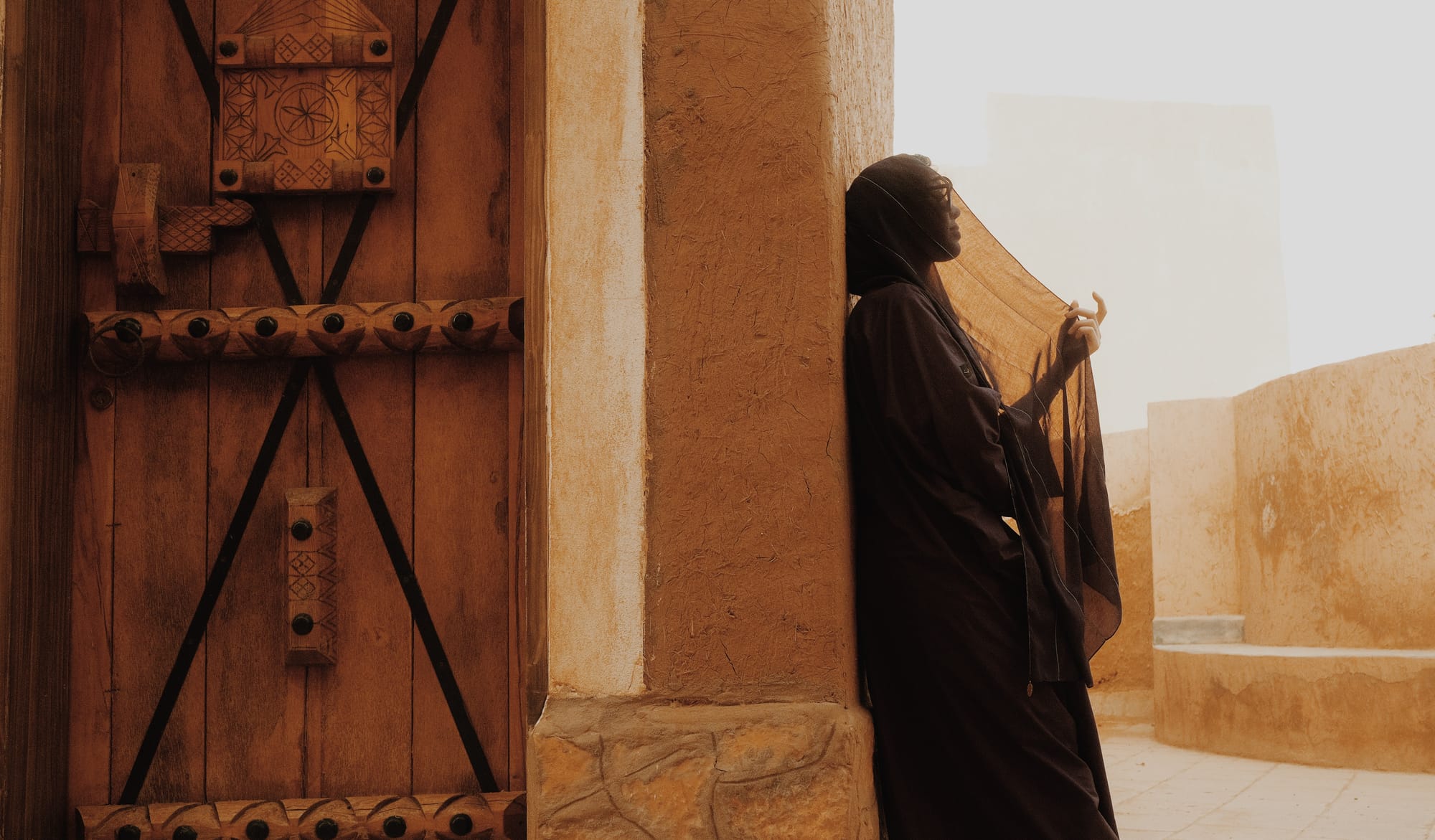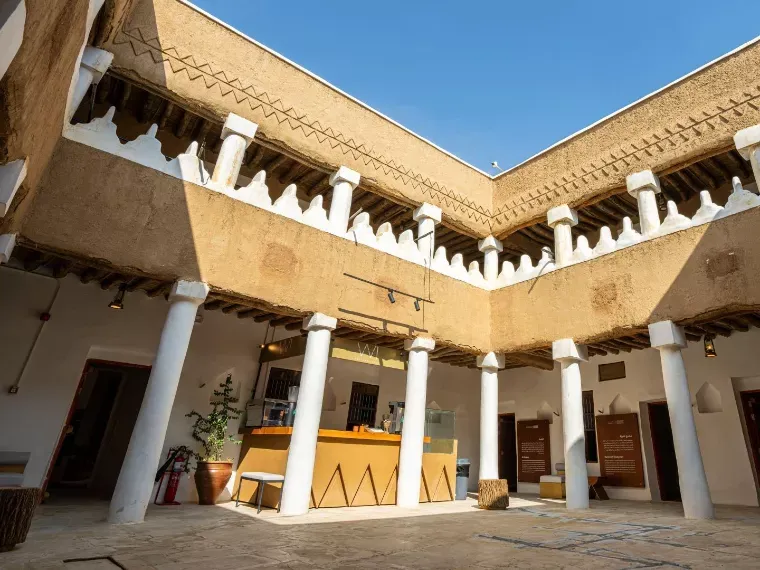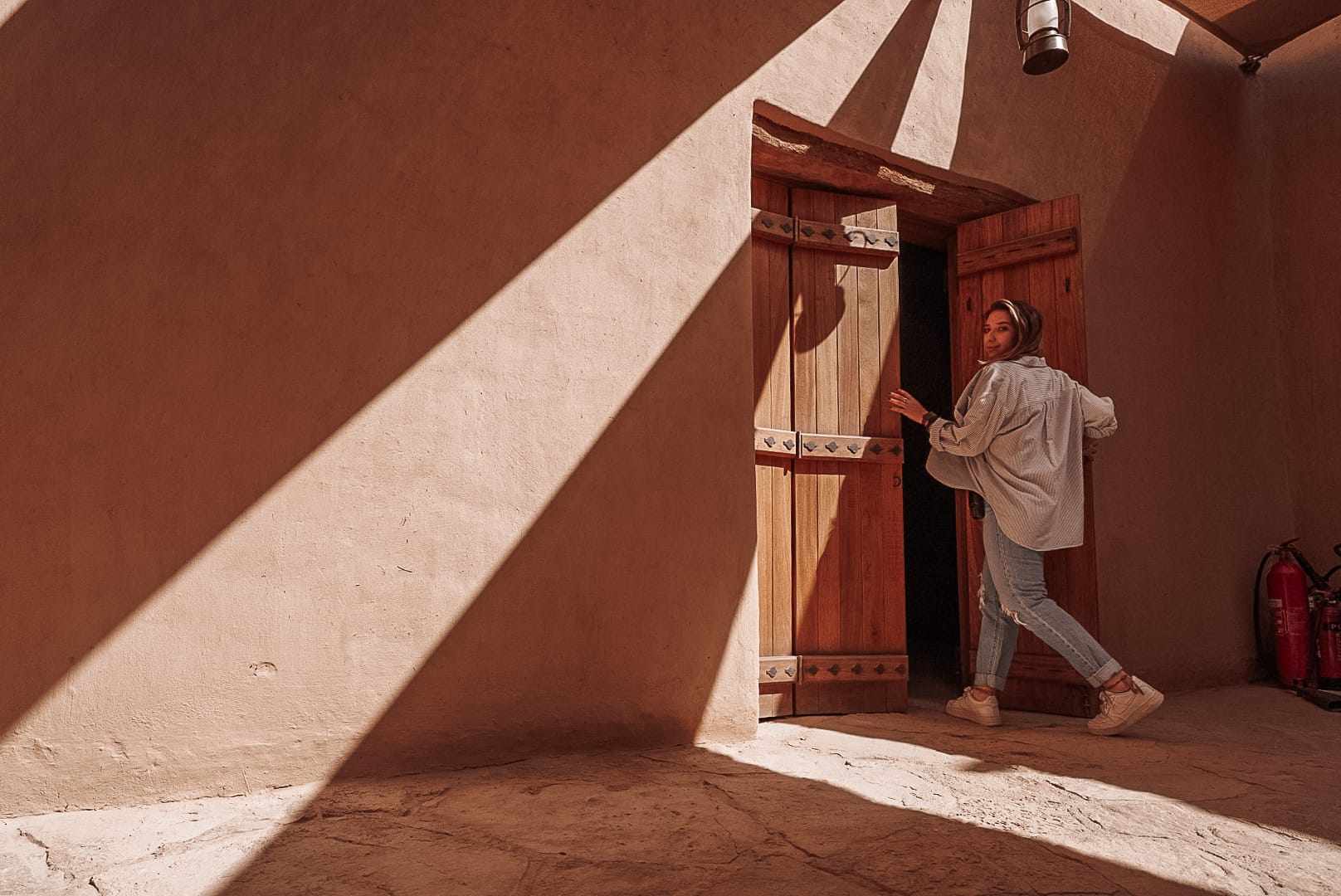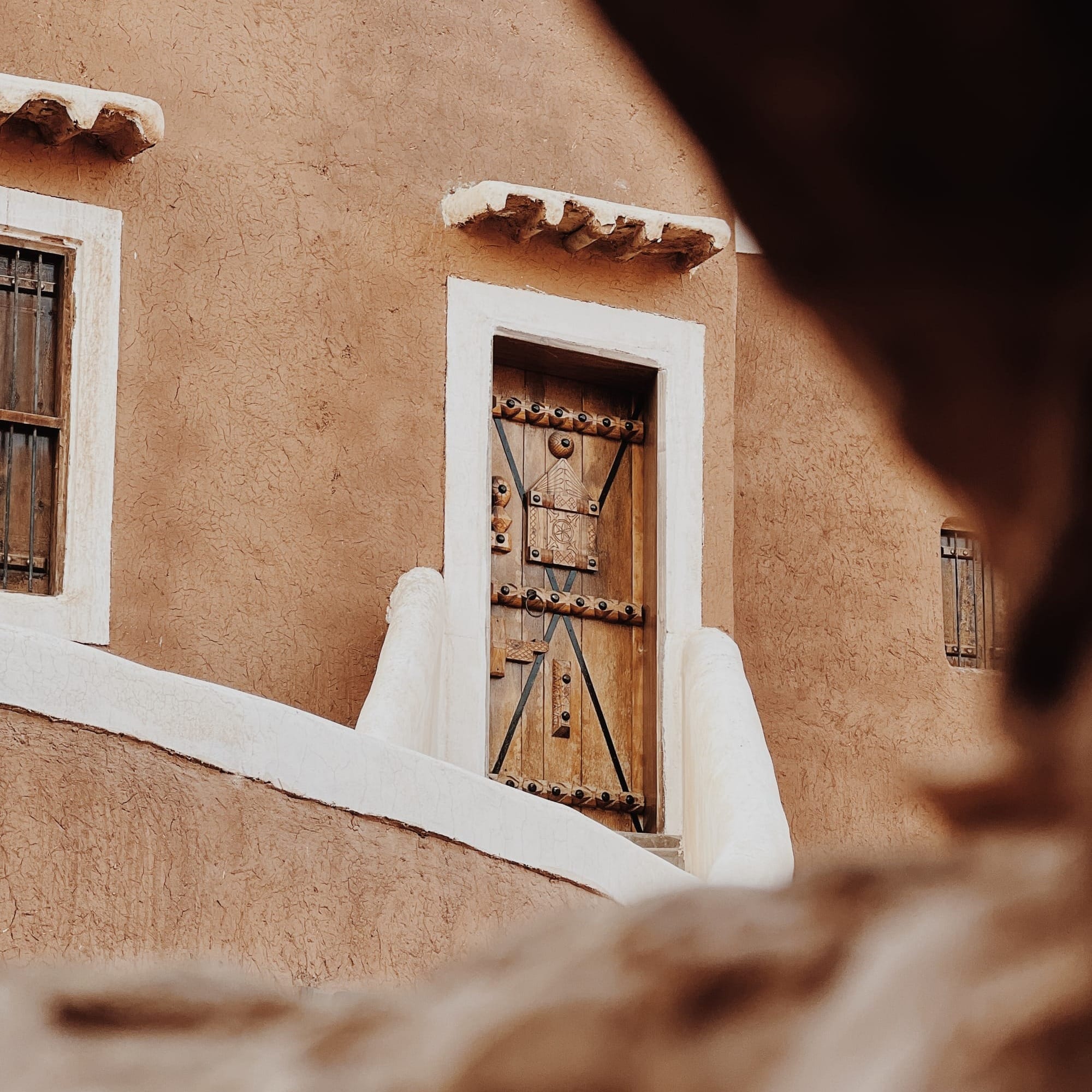An Intimate Look at Central Saudi Arabia’s Cultural Heart Through Its Homes
Introduction: More Than Walls, a Way of Life
In the heart of Saudi Arabia, beyond the sands and city skylines, lies a style of home that tells stories with every detail — the Najdi home. These are not just dwellings. They are living expressions of culture, community, and philosophy.
Rooted in the central region’s climate, tribal customs, and values, the Najdi home is a place where architecture becomes memory, and symbols become language. To step inside is to understand what it means to belong, protect, host, and preserve.

The Foundations of Najdi Architecture
1. Built by Earth, for the Earth
Najdi homes are traditionally made of mud brick (اللبن) — a material chosen not just for availability, but for practical genius. In a region where summer scorches and winter chills, mud walls keep interiors cool and warm naturally.
- Thick walls for insulation
- Small high windows for privacy and light control
- Internal courtyards for airflow and family gatherings
This isn’t just architecture — it’s adaptive wisdom passed down for centuries.

2. The Layout: Privacy with Purpose
Najdi homes reflect deep cultural values, especially around family and hospitality:
- Majlis (مجلس): The receiving room for guests, often separate from the family living area — a symbol of generosity and honor
- Hosh (حوش): The central courtyard — a private outdoor space for children to play, women to gather, and life to happen
- Mabith: Sleeping areas, designed simply but functionally, with thick carpets and cushions that adapt to family needs
- Sirdab: A cool underground space used in the summer months
Every room serves a purpose. Every wall respects boundaries between the public and the personal.

Symbols on the Wall: Art with Meaning
Najdi homes aren’t plain. They’re rich with decorative elements, each with cultural meaning:
1. Rawashin and Geometric Carvings
Window coverings and wall engravings often feature triangles, zigzags, and stars — symbols of protection, direction, and balance.
2. Painted Doors and Arches
Bold primary colors — red, blue, green — often adorn doors. These are more than aesthetic choices; they are visual prayers for blessing, warding off envy, and welcoming prosperity.
3. Al-Qatt Al-Najdi (القط العسيري)
While more dominant in Asir, Najdi women developed their own versions of interior wall painting, especially around doorframes and majlis ceilings — a way of expressing creativity and feminine presence in the home.

The Soul of the Home: Storytelling and Symbolism
Najdi homes were more than shelters. They were places where:
- Tribal poetry echoed through the halls
- Family lineage was preserved in memory, not media
- Coffee rituals were not just drinks, but social performances of respect
- Swords and heirlooms were hung on walls to mark pride and protection
A Najdi home is where honor is hosted, where custom lives in clay, and where the past walks side-by-side with the present.
Modern Revivals: A Culture Reclaimed
In recent years, there's been a revival of Najdi design in:
- Boutique hotels and museums, like in Diriyah and Ushaiger
- Luxury villas, inspired by traditional layouts with modern materials
- Cultural initiatives, teaching younger generations the meanings behind old symbols
Vision 2030 has opened doors — quite literally — to reimagine heritage as identity, not nostalgia.
Conclusion: The Home as Heritage
To understand Saudi Arabia, you must understand Najd.
And to understand Najd, you must step inside its homes.
Each carved window, each painted door, each sunlit courtyard whispers something powerful:
This is who we are.
This is how we lived.
This is what we value.
In the Najdi home, architecture doesn’t just hold people.
It holds stories — of resilience, of hospitality, of belonging.
